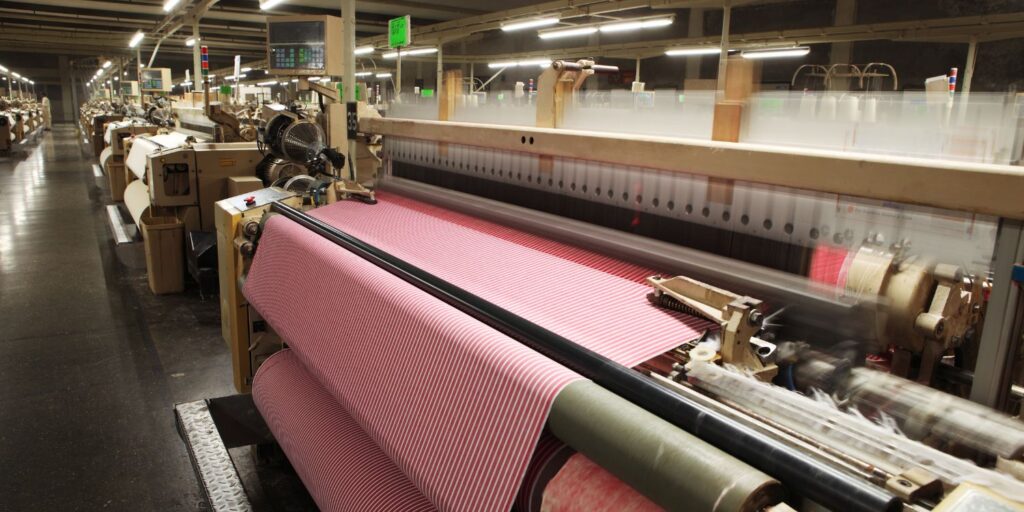It would be difficult to argue that American manufacturing is in a slump. In March 2021, activity in the sector surged to a 37-year high.
Yet at the same time, an estimated half million jobs in manufacturing remain unfilled. Across the spectrum – from low-skilled entry-level positions to specialized roles such as welders and machinists — factory operators find it increasingly difficult to find the workers they need.
According to a study published by Deloitte and The Manufacturing Institute, as many as 2.1 million manufacturing jobs will be unfilled through 2030. At the same time, approximately 2.7 million workers are expected to retire over the coming decade while business growth will result in the need for 700,000 new jobs.
Manufacturing executives cite two main reasons for the current predicament. The first is obvious enough: there simply aren’t enough workers with the skills and training needed for modern manufacturing.
The second reason has more to do with the expectations of today’s American workforce. Younger workers, for instance, reject factory jobs as stationary, low-knowledge work with few prospects for advancement. Many believe manufacturing jobs are obsolete and will be replaced by robots and overseas competition. Other options – such as technical or professional pathways in other industries – seem more attractive. And, of course, there’s always the side hustle alternative. Increasingly, workers can find flexible and fulfilling work through options such as Uber, social media, freelancing, and more.
Adding to the mix is the phenomenon of the great job migration, where many employees are reevaluating their work and leaving their current employers to find more desirable jobs elsewhere. If your company is facing these headwinds, consider the following tips for attracting and keeping valued manufacturing employees.
Show them the money
Many manufacturing positions require fairly basic capabilities – such as following directions, willingness to learn, and follow-through. Think of positions such as assemblers, production work helpers, and hand-held tool cutters.
Traditionally, these jobs may have been categorized as entry-level and minimum wage. Things have changed. Today’s factories compete with entry-level talent from warehouses and distribution centers run by the likes of Amazon, Costco, and Walmart who pay $15 per hour or more. To keep pace, factory employers are aggressively boosting pay to attract the best employees.
Manufacturers also are increasing the shift differential paid for work on second and third shifts – the jobs often assigned to new hires out of respect for the preferences of more tenured employees. Higher second and third shift pay rates can aid recruitment, without increasing labor costs on the traditionally coveted first shift. FedEx Express, for example, is adding $2 per hour to the wages of night operations employees at its World Hub in Memphis, Tennessee.
Bring sexy back
If manufacturing jobs seem unattractive for today’s workers, maybe it’s time to bring sexy back. To attract employees, many companies are initiating sign-on bonuses after the successful completion of a probationary period (typically 60-90 days). Others are adding or increasing bonuses paid to current employees who refer successful job candidates.
Schedule flexibility is attractive to new hires as well. Some companies offer flex schedules where fulltime may not be a requirement and the ability to move between shifts is facilitated. Others offer flexible vacation schedules so that employees can take a day off here and there to take advantage of the good things in life – like the beginning of hunting season, a child’s school event, or maybe the chance to go to a ball game on short notice.
To keep employees motivated (especially younger workers with the right skill sets), smart manufacturers are also investing in worker training and focusing on career growth. During the hiring process, these companies set realistic career expectations for new employees – with clear roadmaps and timelines regarding pay raises, promotions, and training opportunities.
When it comes to attracting and retaining good and loyal employees, the role of company culture should not be overlooked. Companies can minimize turnover and show that they care about their employees with straightforward measures such as maintaining a comfortable, clean, and safe environment. If employees are still quitting, managers need to initiate open up the lines of communication. Managers who encourage input and feedback aren’t just building stronger teams, they’re building strong company cultures.
Personal touches count too. Celebrate team milestones, host a quarterly barbeque, provide positive feedback, and encourage creativity. Foster respect, encourage a healthy work-life balance, connect with team members, and provide the tools they need to succeed. “Little things” like these can play a big role when it comes to keeping employees happy and productive.
Know where your workforce is coming from
Many manufacturers are implementing strategies that target specific populations with a tailored recruiting approach. Some pursue military veterans, others help to enroll students at nearby trade schools and community colleges. Trade associations are also helping their members by establishing relationships with schools and workforce organizations.
Historically, companies have required a basic grasp of the English language. Today – particularly amid the COVID-19 pandemic – many companies have dropped this requirement, thus widening the available pool of potential workers. To attract Spanish-speaking workers, for example, some companies are placing Spanish-language billboards throughout their cities and are sponsoring events such as Hispanic Festivals to speak about employment opportunities.
Finally, to rebuild the employee pipeline, many manufacturers are revamping their hiring requirements across a range of areas. Traditional requirements – such as marijuana screenings and drug tests, disqualifying convictions, high school diplomas, and prior experience – are now being deemphasized or eliminated entirely.
You can’t control everything, but you can be proactive
In normal times, people quitting jobs in large numbers is a sign of a healthy economy with plentiful jobs. But these are not normal times. The pandemic has led to a massive recession here in the U.S. Millions of people are still out of jobs. Yet, employers now face severe labor shortages – even as pandemic life recedes.
The younger generation is leaving jobs in search of more money, flexibility, and happiness. Many are rethinking what work means to them, how they are valued, and how they spend their time. Rather than clock in at the same company for 40 years, today’s workers are more willing to switch jobs frequently if it means getting the income they need and a schedule they want. And if their current position won’t let them pay down debt or fully support their lifestyle, today’s workers now have the means to add a side hustle to earn extra money.
Ultimately, there is no way you can control every aspect of your team’s work experience. If someone wants to leave, there is little you can do. That said, proactive measures as described here can do wonders to keep employees happy in the first place – while improving the performance and cohesiveness of your workforce. The result is increased employee satisfaction and loyalty.
At Crow, we’re here to help you in such efforts. We can provide operational and maintenance training to support your employees and management team. We can also help with training to your Spanish-speaking personnel. Need a hand? Give us a call and learn more about how Crow can help: (503) 213-2013.
Who are we?
Crow Engineering is a multi-discipline consulting engineering firm serving mechanical, structural, and civil engineering needs for a variety of industries.
Engineering Services
the crow connection
Recent News
The Crow Connection delivers high-level insights on engineering, automation, and process optimization, helping you drive efficiency and innovation. Covering topics like AI-powered automation, manufacturing strategies, and industrial process improvements, it’s a must-read for leaders seeking a competitive edge.










































